BestReviews is reader-supported and may earn an affiliate commission. Details
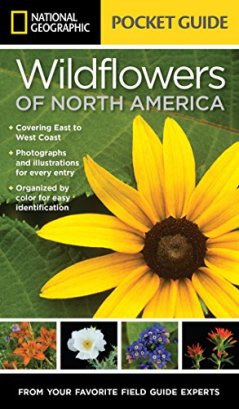
A good basic flower guide that covers most of North America and helps you identify 160 species.
A nice beginner guide to identifying wildflowers across the continent. A good size that you can carry easily hiking or in the car for quick reference. Nice pictures. Full and eye-catching color. Covers most popular plants well.
The book is very concise and will not include everything but is a good beginner guide.
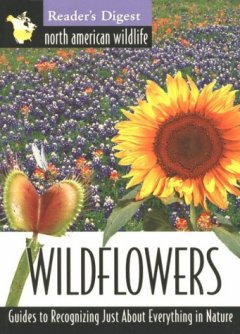
This is a very informative and thorough guide that is easy to understand and use.
Covers hundreds of species of wildflowers. Good illustrations. Quickly becomes an easy "go to" book. A good reference. Includes range maps and common names. Includes habitat, size of flowers, and what to look for when spotting. Also identified by when the flower is in bloom.
The paperback on this field guide is not reinforced with any kind of waterproof or trail-friendly material.
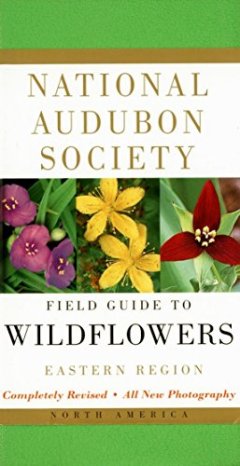
A revised edition of a classic with hundreds of new full-color photos and the reliability of the Audubon name.
Two books available - western and eastern regions to make your search easier and your book thinner. Comes with a waterproof cover. Features pictures of the flowers in their habitats. Images arranged by color and shape make them easy to find.
Though these books are quite comprehensive, you will need to buy two in order to get the whole North American fauna.
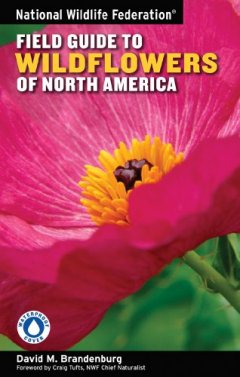
This book covers a wide array of flowers and has good maps to help with identification.
A good reference manual with lots of photos. Features many, many wildflowers. Good descriptions. Easy to use. Very detailed range maps. Good color charts. Includes common and scientific names.
The pictures in this book are a little small. The book is a little thick to be used as a field guide.
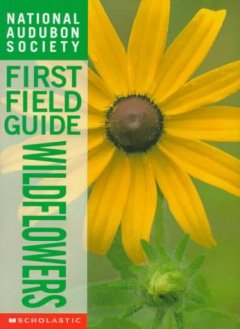
A starter field guide geared toward young naturalists.
Small enough to comfortably take with you on a hike. Written in an easily understandable way. Color coded for easy reference. A good book that will pique the interest of most people.
This user-friendly book does not feature as many wildflowers as some others available.

We recommend these products based on an intensive research process that's designed to cut through the noise and find the top products in this space. Guided by experts, we spend hours looking into the factors that matter, to bring you these selections.

Anyone who enjoys hiking, camping, or spending time in nature understands the joy of stumbling upon a patch of striking wildflowers. But identifying the flowers that you encounter on your wilderness treks can be tricky because there are so many varieties across the country.
If you want to know more about the wild flora you come across, a wildflower field guide is a necessity for your next outdoor excursion.
You’ll only be successful in recognizing wildflowers if you choose the right resource. But sorting through the many guides on the market can be tricky. If you’d like to buy a wildflower field guide, continue reading our shopping guide for all the tips you need to choose the best book for your next nature adventure.

Wildflowers are pretty much exactly what they sound like – flowers that grow in the wild without any intentional seeding. They are plants native to the regions in which they’re found, not hybrids or selected cultivars. However, the term “wildflower” can be used to describe the entire plant, not just the bloom. Some common wildflowers in the U.S. include butterfly milkweed, bitterweed, chocolate daisy, long-spurred violet, painted trillium, and native wisteria.
Where to find wildflowers
Because they grow naturally, wildflowers can be found nearly anywhere in nature. You’re likelier to find them in wilderness areas, where they’re less affected by heavy foot traffic and other environmental stress. In particular, you can usually find wildflowers growing along trails in valleys or south-facing slopes that receive a great deal of sun. It’s also important to consider the season. In the southern U.S., wildflowers start springing up in March and April. In the cooler northern states, you likely won’t see wildflower blooms until May or June. In most areas, try to go wildflower hunting before the foliage from surrounding trees shades the ground completely.

Size: When you’re considering what size field guide to buy, it helps to think about how you plan to use the book. If you’re going to use it at home to identify flowers you’ve seen on a hike or camping trip, any size book will do. A large, heavy guide will work just fine because you don’t have to carry it around.
If you want to identify wildflowers on the go, you’ll want a field guide that’s small enough to pack and carry on your hike or nature walk. Opt for a smaller book that you can fit in the pocket of your backpack or jacket so you’ll have easy access to it.
Pay attention to the field guide’s weight, too. Some guides are divided into multiple volumes, one for each different region, which allows you to carry a compact book that still includes all the information you need to correctly identify wildflowers in your area.
Number of species: For a field guide to be as useful as possible, it should include identifying information for a wide variety of wildflowers. Take note of how many species the book covers, some include as few as 150 species, while others have information for over 2,000. The more species the guidebook includes, the more success you’ll have in identifying the flowers you see.
Region(s): It isn’t practical for a single field guide to include every wildflower in one volume, so most wildflower field guides cover a specific geographic region. Some cover a large area, such as all of North America, but others break the areas up. For example, one volume might cover the eastern portion of North America, while another might only include species found in the Southwest.
Choose a field guide that covers the region(s) in which you plan to look for wildflowers. If you want to identify flowers on the go, you might be better off choosing a guidebook that covers a smaller geographic region because it won’t need to contain all the information necessary for identification.
Images: While written descriptions of the species can be helpful when you’re trying to identify a flower, it’s often easier if you have a photograph for comparison. Choose a wildflower field guide that contains clear color photographs of all the species it covers, so you can easily identify any bloom you find. Some field guides contain both a photo of the wildflower in its natural habitat and a detailed illustration of the bloom to help you pick up smaller identifying features.
Season and habitat details: To make it easier to identify the wildflowers you encounter, choose a field guide that includes season and habitat information about the flowers. If you find a particular flower in the fall, for example, you’ll be able to narrow down the possibilities more quickly if your guide includes the season in which the flower blooms. The field guide may also include information about the habitat in which the flower grows, such as shade or wetland. These details can make it much easier to distinguish one wildflower from another.
Organization: The way the wildflower field guide is organized makes a difference in how quickly and easily you’re able to identify a bloom. Books that organize flowers by color and shape are probably the easiest to use, but you can find some guides that are organized alphabetically with a quick-identification key that helps make finding the flower even easier.

Wildflower field guides vary in price based on the number of species they include. You can expect to pay between $7 and $30.
Budget-friendly: A basic wildflower field guide that covers 100 or fewer species costs between $7 and $13.
Mid-range: A classic wildflower field guide that covers approximately 1,000 species costs between $13 and $18.
Expensive: A comprehensive wildflower field guide that covers 2,000 or more species costs between $18 and $30.
Look for blooms just after it’s rained. Dry weather can sometimes affect the growth and diversity of wildflowers.
Memorize some bloom characteristics. If you memorize the appearance and distinguishing characteristics of some of the most common wildflowers in your region, you’ll be able to easily spot them when you’re on a hike or nature walk.
Protect yourself against insects. Flowers attract bugs, so apply some insect repellent or wear a long-sleeved shirt when you go wildflower hunting.

Q. What should a beginner look for in a wildflower field guide?
A. If you’re new to wildflower identification, you’ll want a field guide that’s compact and lightweight so you can easily bring it with you on a hike or nature walk. Opt for a book that focuses on the most common wildflowers in your area rather than all the possible wildflowers in North America. It also helps to choose a guide with large color photographs because you might not be familiar with all the subtle identifying features that can help you figure out what wildflowers you’ve found. Wildflower distribution maps also come in handy for beginners.
Q. What features should I consider when trying to identify a wildflower?
A. The first thing that you’re likely to notice about a wildflower is the color of the bloom, but you should also pay attention to the shape and arrangement of the petals and leaves and the overall size of the plant. You should also note the plant’s growing habits, such as whether it creeps low on the ground or grows as a vine. The wildflower’s habitat and the time of year that you find it can also help identify it.
Q. Where can I get more information about the wildflowers in my area?
A. Many states have native plant societies that are dedicated to preserving, conserving, and providing information about wildflowers, so that’s a good place to start. If you don’t have a native plant organization in your state, consider contacting a local botanical garden or arboretum for information about wildflowers you’re likely to encounter.
Get emails you’ll love.
Learn about the products you’re wondering if you should buy and get advice on using your latest purchases.
